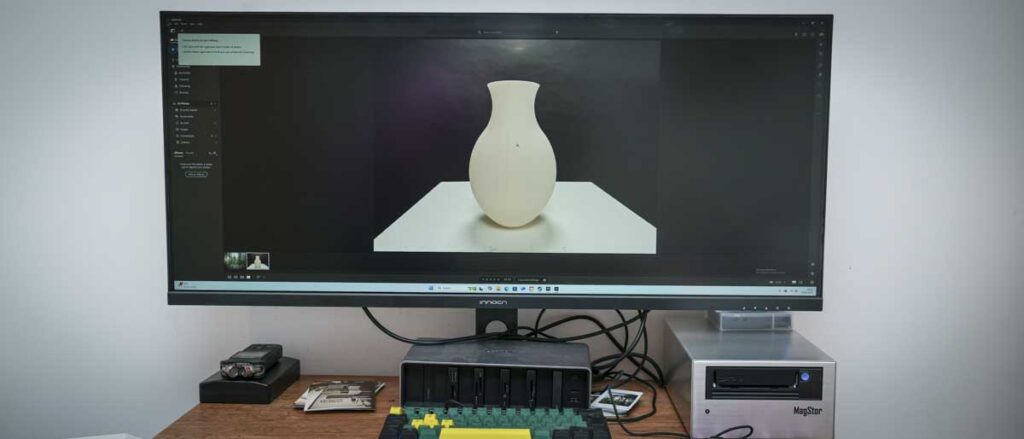Why you can trust TechRadar
We spend hours testing every product or service we review, so you can be sure you’re buying the best. Find out more about how we test.
innocn 40C1u: 30-second review
There’s no doubt that out of the box, the Innocn 40C1U is instantly impressive with its huge 40-inch 21:9 aspect ratio screen that essentially dominates the desk once it’s in place. Considering the price, I was quite surprised by just how well built the screen was, and it feels by no means cheap despite coming in at almost half the price of other monitors that are similarly specced and offering 5K resolution, DCI-P3 and Adobe RGB colour spaces.
Getting set up and started was simple enough, although I would highly recommend having at least an extra pair of hands to manoeuvre the monitor into place. It’s not overly heavy, but it’s more the size that makes it a little difficult to place on your desk, and once situated in your workspace, it does dominate.
However, because the screen itself features a very thin bezel and the metal stand and design is relatively slimline, once it’s pushed up against the wall, it blends in very nicely, still enabling plenty of room on a standard-sized desk for keyboard, mouse and other accessories and peripherals.
Getting started is as straightforward as with any monitor, with the option for either HDMI, DisplayPort or, in the case of this review, USB-C connected into either a MacBook Pro M1 Max or an Asus Prime-based PC.
As the monitor flicked to life, I felt that the factory calibration was overly warm, and sure enough, checking it out with Datacolor Spyder X2 Ultra and running a quick screen calibration quickly highlighted how off the initial calibration colours were. Once the screen was cooled significantly, the visuals really started to look impressive.
Compared with some of the other monitors that I’ve looked at that also support DCI-P3 and Adobe RGB, the one thing that was noticeable was the IPS screen lacked some of the depth of tone and colour of those more expensive screens, but if you’re using this for pure productivity or media production, then that really isn’t going to be an issue.
The other point is that the screen is limited to 100Hz, which to be honest at 5K is still impressive, but if you’re looking at gaming and you need full depth of contrast and refresh rates, then this probably isn’t the best option for you, and a curved screen of a similar size is going to give you a more immersive experience.
As I went through video editing in DaVinci Resolve and photo enhancement in Adobe Photoshop, the additional real estate definitely helps with the workflow, and I found myself using a large percentage of the screen for creative applications, whilst leaving my email browser open on the right-hand side so that I could quickly check and respond to emails. This is exactly as I would do with my two-monitor setup, but here it feels a lot cleaner with just this one single monitor.
As expected, the screen does also include speakers, although firstly these aren’t greatly powerful and secondly they’re extremely tinny, so if you have another form of speaker, even if that’s just your MacBook Pro internal speaker, then this is going to have far better audio quality than the monitor itself.
By the end of the test, I was impressed by the quality of the screen considering the price. Whilst it might not really challenge more expensive Adobe RGB creative monitors from the likes of Eizo, ViewSonic or even Apple, for the price, what’s on offer here is exceptionally good and will suit most creators and coders looking for a large-scale monitor with a high-quality, clear screen and decent refresh rate.
innocn 40C1u: Price & availability
- How much does it cost? $799
- When is it out? Now
- Where can you get it? Widely available
The Innocn 40C1U is widely available and can be purchased at $780 directly from the innocn.com website by clicking here. It’s also available via online retailers, including Amazon.com where it’s currently $750 at time of review.
innocn 40C1u: Design
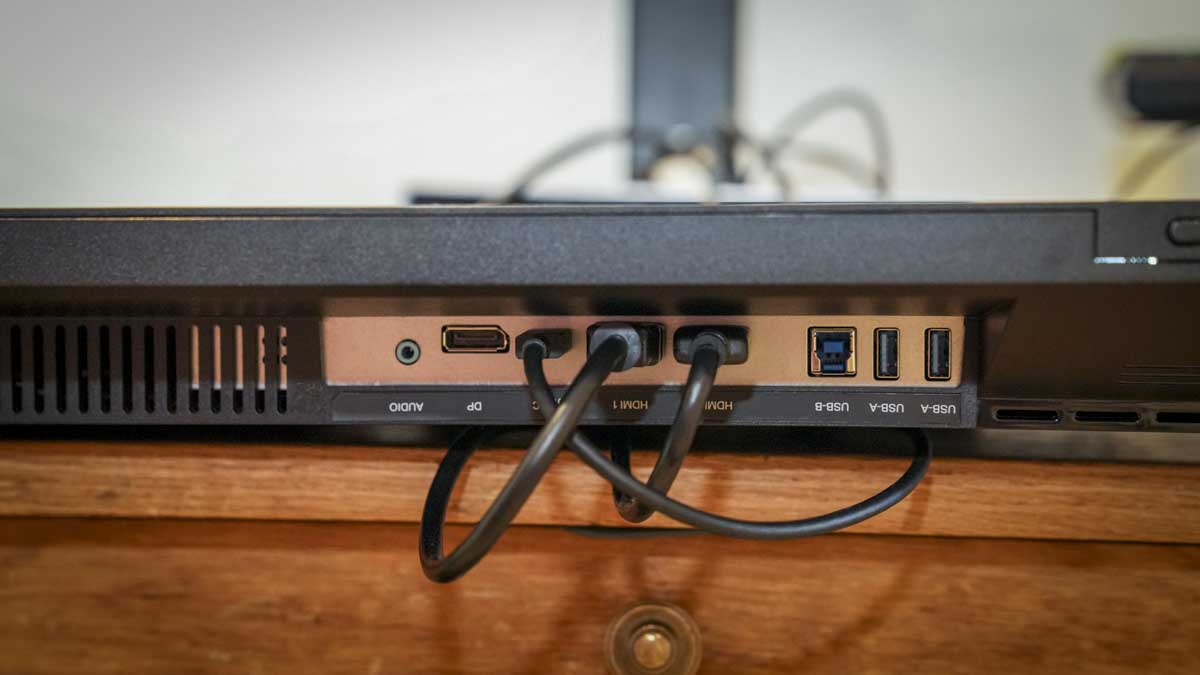
Specifications
Screen Size : 40″
Resolution : 5K UWQHD (5120 x 2160 Pixels)
Display Technology : LCD
Aspect Ratio : 21:9
Refresh Rate : 100 Hz
Panel Type : IPS
Connectivity : Type C ; 2xHDMI2.0 ; DP1.4 ; 2xUSB-A ; USB-B
Brightness (Typical) : 350cd/㎡ (typ)
The price point is by no means high, considering what you’re getting with this 40-inch monitor that supports Adobe RGB and a 100Hz refresh rate. When this monitor arrived, I was expecting it to be a little plasticky and limited in features.
However, from the outset, I was impressed by the overall build quality. The bezel around the outer edges is nice and slim, and when it’s all assembled and sits on the desk, it has a modern aesthetic that will suit any design studio or coding office.
The huge 40-inch screen is flat, and actually, this is much better suited than curved screens when it comes to productivity. Those curved screens are better placed for gaming, giving you a more immersive experience, whereas a flat screen is better for laying out screens and for productivity, as there’s no distortion of panels or the images you’re adjusting.
Likewise, if you’re typing, then having a purely flat screen is far easier to use. At 40 inches, it is huge; essentially, it’ll give you a similar screen real estate to three 17-inch monitors placed side-by-side, but with no interruption along the horizontal, whilst the vertical is essentially the same as a 32-inch 16:9 monitor.
Considering the size, it’s worth noting the pure scale of the monitor. It measures approximately 945mm x 420mm x 55mm in depth, and these measurements don’t include the stand. The stand measures 230mm x 200mm for the base that sits on your desk, and the full height can go from as low as 460mm to 580mm, with a subtle tilt upwards and down as well as to the left and right, making it extremely easy to position. The monitor and stand come in at about 12kg.
There is the option for a VESA mount with the 75 x 75 fitting, but with that weight, you might find it a little tricky to mount, although it should fit most heavyweight TV mounts without issue.
When it comes to connectivity, there is a single USB-C (65W) to enable a maximum 100Hz refresh rate, then there are two HDMI 2.0 ports (100Hz max), a DisplayPort 1.4 (100Hz max), and also a few USB ports with two USB-A 3.0 ports and a single USB-B 3.0. It’s also worth noting that there are speakers built into the monitor if you want a neat solution.
innocn 40C1u: Features
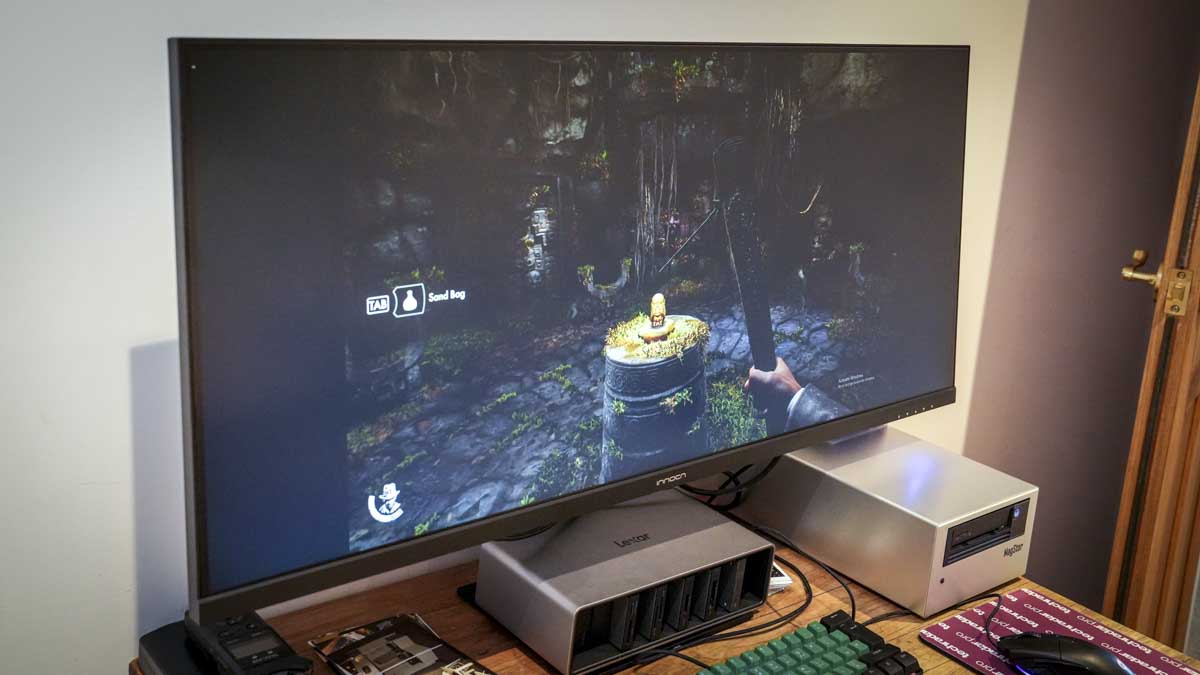
Once the screen is on the desk, the 40-inch 21:9 aspect ratio is instantly impressive, and the fact that it supports a resolution of 5K QHD 5120 x 2160 pixels really does stand out. It’s also good to note that it has a refresh rate of 100Hz.
As with the monitor’s design, there are several connectivity options, including those highlighted above, but it’s worth also noting that the USB-C port I mostly used throughout this test also offers 65W PD passthrough. This means that under general productivity use, when you’re not pushing your computer too much, that’s enough power to supply a MacBook Pro M1 Max to keep the battery topped up for an entire day. For most other laptops, that 65W is perfect, meaning you just need that single cable to your machine to both power it and supply the monitor with the visual data.
The standout feature aside from its pure 40-inch scale is the ultrawide colour gamut that enables rich, bright colours, especially suited to creative applications such as photography and video editing, but also good for general productivity. The monitor supports sRGB at 99%, DCI-P3 at 97%, and offers 16.7 million colours at 8-bit. It’s a shame that there’s no REC 709 option. So, for those looking for the best monitor for photo editing or the best monitor for video editing, in my experience this is a solid choice with an ultrawide screen.
The panel type used is IPS (In-Plane Switching), which means that from multiple angles, you get good, vibrant colour and sharp visuals. This makes it an ideal option for anyone working in a studio where several people might need to view the monitor throughout the day as you show work and collaborate.
During this review, I used the innocn 40C1u for video and photo editing as well as general productivity. That screen real estate is ideal for anyone focused on Excel, spreadsheets or word documentation. It means you don’t have to quickly switch between applications as you can have them all sat side-by-side on the screen, making it far easier to work.
The 100Hz refresh rate is great to see for a creative-based monitor and will enable you to watch most videos smoothly, whilst also allowing you to play many games, although the 100Hz is a little low for competitive gaming.
Overall, for modern design, creativity and productivity, the features of the innocn 40C1u are well balanced with a good choice of colour gamut depending on the type of work you’re doing and a good range of resolutions all the way up to that 5K QHD.
innocn 40C1u: Performance

From the outset, the innocn 40C1u was quick and easy to set up despite its large size, and whilst it is heavy, one person should be able to manoeuvre it relatively easily, although an extra set of hands is always helpful with a monitor of this size, especially when mounting it to the stand.
The stand was exceptionally simple to attach, is a really good quality metal build, and offers strong support. One of the issues I was worried about with a monitor of this width was wobble when typing on the keyboard, but thankfully, the stand and base are heavy enough to reduce vibration of the screen when working.
The aesthetics of the monitor are also spot-on, with nice slim bezels and a dark matte black finish that just gives it a really good premium feel despite its relatively low price point.
Starting the monitor up, the first thing I noticed was just how warm the colours looked. Flipping through the onscreen display options, I went from the standard mode to sRGB and then onto Adobe RGB, but still wasn’t satisfied that the colours had been calibrated correctly, at least not for the environment I was in.
Everything looked overly warm, which might be fine if you’re watching multimedia, but if you’re doing colour-critical work, you need accuracy, especially with a monitor sold for creative use. This adjustment could be done directly using the onscreen display, which is relatively easy to navigate with plenty of options. The navigation buttons are under the bottom right-hand side of the screen.
Under the professional settings, the CT settings were set to ‘Warm’. This could be quickly adjusted to ‘Natural’ which gave a much better look, however I found that these colour settings still weren’t exactly as I wanted, so I was pleased to see that there was a user-defined mode, and through there I could adjust the RGB just to cool down some of that warmth with the blue slider.
The adjustment was small but made a big difference to the quality of the colours displayed on the screen. To ensure the monitor was completely calibrated, I ran it through the Datacolor Spyder X2 Ultra to fully calibrate it to the ambient colour temperature of my environment. Once done, the colours and tone of the screen instantly became far more balanced and ready for content creation.
As I used the monitor for editing, work documents, browsing the internet, watching YouTube videos (when I should have been working), and editing video in DaVinci Resolve, I was impressed with the overall sharpness of text, detail in images, and superb colour accuracy.
Visually, without hardware analysis, the screen looked superb and really highlighted the strengths of an IPS screen for creative and productivity work. OLED screens might give you more impact for blacks and contrast, which is good for gaming, whereas for pure productivity, an IPS screen is often a better option, with decent coverage of sRGB, Adobe RGB and DCI-P3 colour spaces.
For creative and productivity use, the screen excelled, and I was impressed with most aspects, especially the resolution that enabled so much real estate for applications. It essentially feels like much the same as my three 27-inch monitors side-by-side, but it takes up less space and has no bezels between each section. From a practical point of view, it also means there are fewer cables needing to be plugged into the PC and the power socket.
One area worth highlighting is the built-in speakers, which are tinny and underpowered. They also seem to be mono and biased to the left-hand side of the monitor. They are okay for video calls or the odd YouTube clip, but the audio quality doesn’t match the quality of the screen, and I switched to my MacBook Pro’s internal speakers or my Fostex 6301B speakers.
During testing, I ran the monitor quality tests in Spyder X2 Ultra to check screen uniformity, colour accuracy and contrast, along with a few other tests. For a monitor of this size, it performed exceptionally well.
The first tests were run in standard mode, and as expected, the overall monitor rating was modest at 3.0. However, after calibration and switching to Adobe RGB, results were far better, with gamma response and contrast both scoring 5/5, and Adobe RGB colour accuracy scoring 4.5/5, making this a solid option for photographers, with an overall score of 4/5.
It’s worth noting that luminance uniformity across the screen was fair, with about a 10% variation from the base across different parts of the screen, with the best uniformity in the bottom right and the brightest area in the top left. Visually, you wouldn’t really notice the difference.
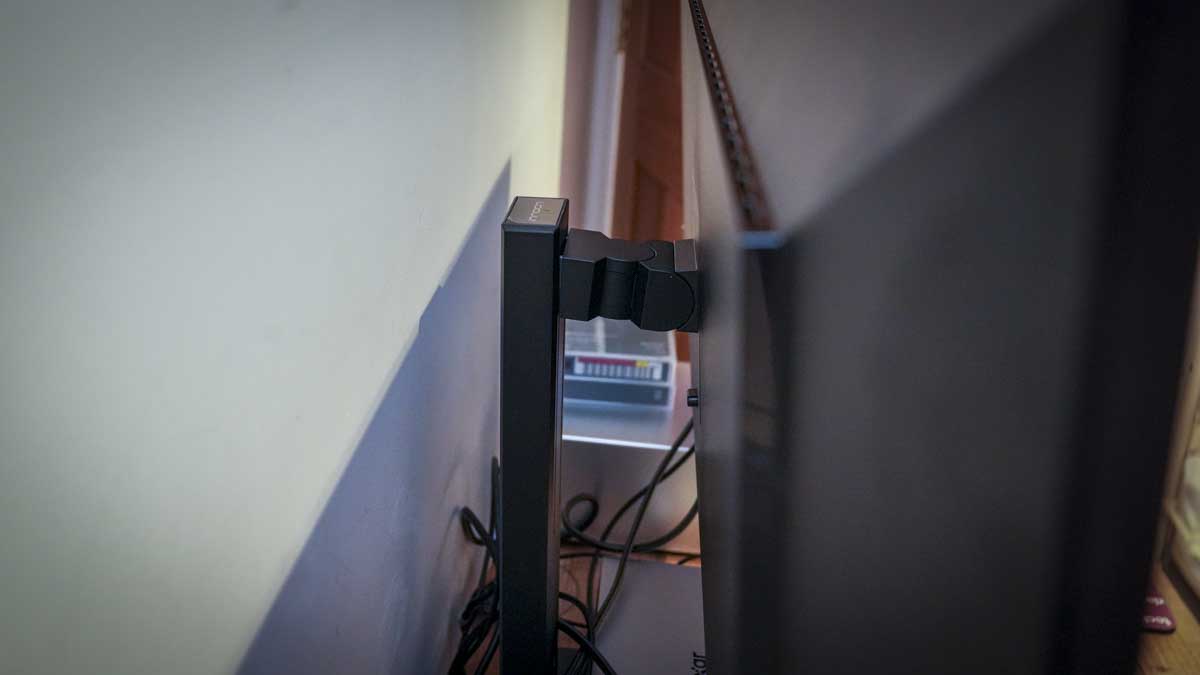
innocn 40C1u: Final verdict
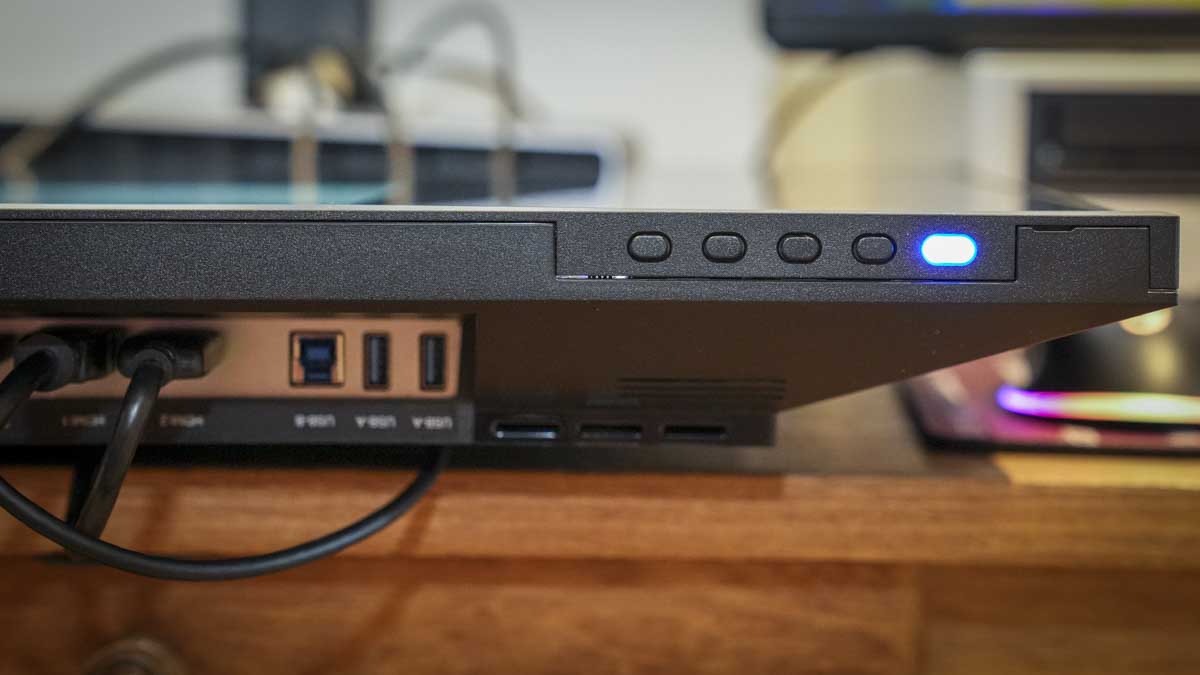
At the end of the test, I was impressed with the quality, from the high-quality build, thin bezels and aesthetic styling, to the fact that this monitor would sit perfectly in any high-end studio without issue. While the monitor comes in at the budget end of the creative monitor market, there’s nothing cheap about the look and style, and in fact, it feels more premium than some more expensive monitors, including two high-end models I use in the studio.
When it comes to connectivity, there’s a good selection from USB-C, HDMI and DisplayPort, meaning that almost any machine you want to plug in should be catered for. It’s worth noting that whilst there is a DP and a USB-C cable in the box, there is no HDMI cable.
In use, that extra real estate and 21:9 aspect ratio are a real benefit, especially for creative work. As I’m presently editing a film at 21:9 using anamorphic lenses, the ability to watch that footage at full resolution and aspect ratio really adds to the cinematic depth of the piece I’m working on.
I also like that once calibrated, the monitor’s onscreen colours matched the output on our printers, with a very good match on tone and contrast.
Where this monitor falls short is with gaming and some media playback. While TV programmes and films look fine, the 100Hz refresh and lack of deep blacks you get from OLED will be a limitation for gaming. In all other situations, this monitor is spot-on and an ideal option for content creators and anyone looking for additional real estate for productivity.
Should I buy a innocn 40C1u?
Value | Very good considering the screen size, resolution and build quality | 5 |
Design | A slimline design makes this large monitor seem less dominant in the office | 4.5 |
Features | A good balance of features considering the price, just let down by weak built-in speakers | 4 |
Performance | Generally superb performance with some variation in screen luminosity, but otherwise superb colour tone and vibrancy | 4 |
Overalls | A great all-round monitor for content creators and productivity, but less suited to gaming | 4 |
Buy it if…
Don’t buy it if…
For more top picks, we’ve reviewed the best ultrawide monitors.

